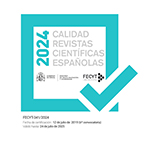La musica del Decameron, tra Boccaccio e Pasolini
Abstract
This contribution proposes an analysis of the function that the presence of music plays in Bocaccio’s Decameron and in the associated rewrite film of Pasolini. Both in the in fourteenth century and contemporary works, music acts as a structural principle of cohesion theme, taking the character of a narrative framework internal to the one created by the authors of the two works. In the medieval text every day is punctuated by the development of a musical practice declined in various forms of dance songs, which are rich in the lyric repertoire of the period, often accompanied by a musical accompaniment. In the film, the Neapolitan melodies, chosen by Pasolini to illustrate the sound level of the narrative, often takes the form of a Wagnerian leitmotif, identifying characters and the recurring theme in the development work. The work by Pasolini on the musical content of the soundtrack of the movie proves to be a conscious choice of the poet, designed both to support the work of the Neapolitan reinterpretation of Boccaccio’s work that he proposed as well as to emphasize the structural role that music plays in the work already original.Downloads
Article download
License
In order to support the global exchange of knowledge, the journal Cuadernos de Filología Italiana is allowing unrestricted access to its content as from its publication in this electronic edition, and as such it is an open-access journal. The originals published in this journal are the property of the Complutense University of Madrid and any reproduction thereof in full or in part must cite the source. All content is distributed under a Creative Commons Attribution 4.0 use and distribution licence (CC BY 4.0). This circumstance must be expressly stated in these terms where necessary. You can view the summary and the complete legal text of the licence.










